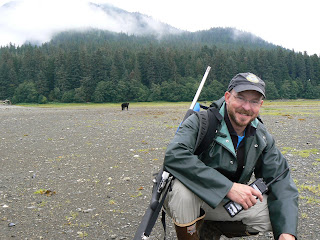
Sunsets in southeast A.K. can be amazing. This one is from windfall island looking toward swan cove which is on Admiralty island. It was taken at 10:35P.M. in July.

These next two were taken during my "commute" to work in July. They're out the window of the floatplane(obviously). It's the only way to fly(weather permitting). lol

We talked a bored pilot into taking a different way home from windfall island. This is over the north end of Admiralty island. It's a lot of fun being able to get so close to the mountains although the margin for error is greatly reduced at this altitude:)

These next two were taken during my "commute" to work in July. They're out the window of the floatplane(obviously). It's the only way to fly(weather permitting). lol

We talked a bored pilot into taking a different way home from windfall island. This is over the north end of Admiralty island. It's a lot of fun being able to get so close to the mountains although the margin for error is greatly reduced at this altitude:)

2 comments:
Beautiful. Especially that first shot of the summer night's (!) sunlit landscape. Keep up the good work.
PS: When I was in Haines, Alaska, working on a flick decades ago, in the middle of summer, the snow and ice and glaciers on the surrounding moutains were still thick and pervasive. I wonder if there used to be more snow and ice in the landscapes in these photos years ago. Would anyone you come in contact there know? I'm assuming it's so, given the other Alaskan sites where global warming has had an impact.
That's an excellent question. Haines normally gets more snow than Juneau and Admiralty(shown in the photos). However, believe it or not Juneau got record snow levels 202 inches last winter! So there's actually more snow than normal on the mountain tops. That photo was toward end of summer and the elevation was under 4,000 feet. But, the mendenhal glacier which is right in Juneau and can be approached on foot has receded an enormous amount since I was last in Alaska. In 2003 there was a piece of rock sticking out of the glacier. Today it's an rock wall over a 100 feet wide! According to the Forest Service folks at the visitor center it was receding 100-200 feet/year. Then in 2004 a 400 foot piece calved off all at once and when I talked to them in early June of this year over 600 feet had already broken off/melted. People that say there's no global warming just aren't looking at the facts. You can argue what needs to be done about it but scientific facts are proving over and over that it's real and probably happening faster than originally anticipated. If I can find the photos I'll try to post a before and after type thing.
Thanks for the important observation. Now we just need to get the rest of the world to notice and take action!
Post a Comment